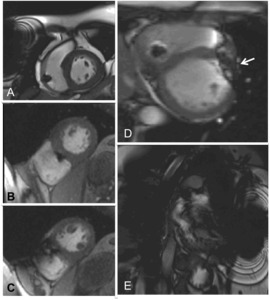Raphael, Claire E., Vassiliou, Vassilis, Alpendurada, Francisco, Prasad, Sanjay K., Pennell, Dudley J. and Mohiaddin, Raad H. (2016) Clinical value of cardiovascular magnetic resonance in patients with MR-conditional pacemakers. European Heart Journal-Cardiovascular Imaging, 17 (10). pp. 1178-1185. ISSN 2047-2404
Preview |
Image (TIFF) (Figure 5)
- Accepted Version
Download (2MB) | Preview |
Preview |
PDF (Figure 1)
- Accepted Version
Download (227kB) | Preview |
![[thumbnail of Figure 2]](https://ueaeprints.uea.ac.uk/64034/3.hassmallThumbnailVersion/Figure_2.gif)  Preview |
Image (GIF) (Figure 2)
- Accepted Version
Download (94kB) | Preview |
Preview |
PDF (Accepted manuscript)
- Accepted Version
Download (785kB) | Preview |
Preview |
Image (TIFF) (Figure 4)
- Accepted Version
Download (413kB) | Preview |
Preview |
Image (TIFF) (Figure 3)
- Accepted Version
Download (1MB) | Preview |
Abstract
Aims: Magnetic resonance (MR) conditional pacemakers are increasingly implanted into patients who may need cardiovascular MR (CMR) subsequent to device implantation. We assessed the added value of CMR for diagnosis and management in this population. Methods and results: CMR and pacing data from consecutive patients with MR conditional pacemakers were retrospectively reviewed. Images were acquired at 1.5 T (Siemens Magnetom Avanto). The indication for CMR and any resulting change in management was recorded. The quality of CMR was rated by an observer blinded to clinical details, and data on pacemaker and lead parameters were collected pre- and post-CMR. Seventy-two CMR scans on 69 patients performed between 2011 and 2015 were assessed. All scans were completed successfully with no significant change in lead thresholds or pacing parameters. Steady-state free precession (SSFP) cine imaging resulted in a greater frequency of non-diagnostic imaging (22 vs. 1%, P < 0.01) compared with gradient echo sequences (GRE). Right-sided pacemakers were associated with less artefact than left-sided pacemakers. Late gadolinium enhancement imaging was performed in 59 scans with only 2% of segments rated of non-diagnostic quality. The CMR data resulted in a new diagnosis in 27 (38%) of examinations; clinical management was changed in a further 18 (25%). Conclusions: CMR in patients with MR conditional pacemakers provided diagnostic or management-changing information in the majority (63%) of our cohort. The use of gradient echo cine sequences can reduce rates of non-diagnostic imaging. Right-sided device implantation may be considered in patients likely to require CMR examination.
| Item Type: | Article |
|---|---|
| Uncontrolled Keywords: | cardiovascular magnetic resonance,cmr,pacemaker,conditional,ppm |
| Faculty \ School: | Faculty of Medicine and Health Sciences > Norwich Medical School |
| UEA Research Groups: | Faculty of Medicine and Health Sciences > Research Groups > Cardiovascular and Metabolic Health Faculty of Science > Research Groups > Norwich Epidemiology Centre Faculty of Medicine and Health Sciences > Research Groups > Norwich Epidemiology Centre Faculty of Medicine and Health Sciences > Research Centres > Metabolic Health |
| Related URLs: | |
| Depositing User: | Pure Connector |
| Date Deposited: | 06 Jul 2017 05:06 |
| Last Modified: | 16 Oct 2025 14:31 |
| URI: | https://ueaeprints.uea.ac.uk/id/eprint/64034 |
| DOI: | 10.1093/ehjci/jev305 |
Downloads
Downloads per month over past year
Actions (login required)
 |
View Item |

 Tools
Tools Tools
Tools